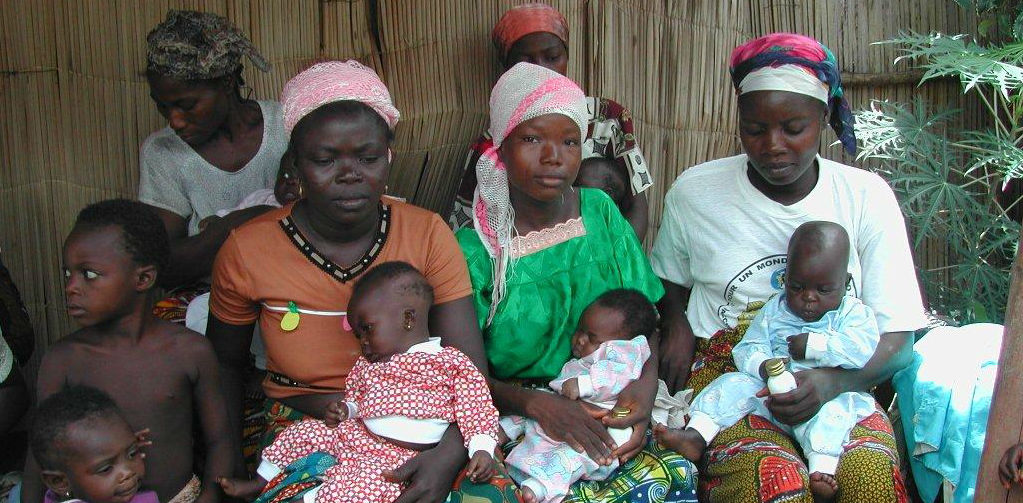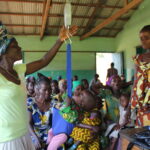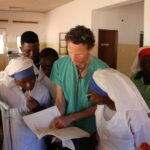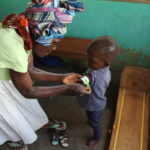Vertical and Horizontal Approaches
Vertical and horizontal approaches to community health have some fundamental differences. Vertical programs often have a preventive focus but they stem from a curative care model. As such they employ a western problem-solving approach and are often disease or health-issue-specific, such as AIDS or malaria. In essence, they attack a health problem and develop strategies to reduce or eradicate it.
These kinds of initiatives tend to be very appealing to Western funders because they are both specific and measurable. Westerners can feel good about saying, “We conquered polio in this country.” However, they often lack sustainability because they lack a foundation of community ownership. Outside professionals tell the community what is needed to fix their problems and how it will be carried out.
On the other hand, horizontal programs focus on prevention and facilitating the community’s response to their own health problems. Horizontal programming has proven very effective but since these methods are typically volunteer driven and not funded from the outside they have been poorly monitored and evaluated. However, those of us who engage in health development programming can attest to their effectiveness. The foundation of these practices lies in community ownership or issues developed through the process of PLA – Participatory Learning in Action.
Here is an overview of the differences between these approaches. When developing global health initiatives, we need to be aware of these kinds of approaches and choose the strategies that will be most beneficial to the long-term health of the community.
Vertical Programs: These are often disease-specific, hospital-based, medically-driven programs.
- Some are very effective. EPI, Roll Back Malaria, and prevention of mother-to-child transmission of HIV are all examples of effective vertical programs.
- They are driven by outside planners and donors with outsiders deciding what is best for the community.
- They often undermine community ownership.
- They are not sustainable if funding dries up or is reallocated to other priorities.
- They often find success at the expense of horizontal approaches by attracting community workers from horizontal programs.
Horizontal Programs
These are community-owned and community-directed programs.
- They require community partnership in design and management. They are founded in mutual design that empowers the community to respond to its own health needs.
- They are directed toward addressing a wide range of problems rather than a single issue.
- They are prevention-focused with curative-care components.
- They are volunteer operated and supported, making them very cost-effective.
- If there is a compensation model incorporated, it is usually modest and sustainable without outside funding.
(Lankaster, 2009)
For a greater explanation of vertical vs horizontal programs see Dr. Ted Lankester’s book Setting Up Community Health Programs.
It is essential that we realize that using strictly vertical approaches to healthcare delivery in resource-poor communities can be more harmful than helpful. This is especially true if these projects are separated from local healthcare professionals and their services. In many cultures, everything Western is better, sought after, and to be imitated while old ways of tradition and caring should be left behind and abandoned.
Working with the Community, not Against the Community
If you plan to function outside hospitals in the community, then you need to invest time in learning how to design and implement horizontal community-based programs that are based in PLA, you need to become a PLA practitioner. In the final analysis, if we do not learn, respect, and implement these methods, we may be destined to leave a legacy of disempowerment and dependence on methods of healthcare that have proven ineffective in resource-poor communities.
However, the opposite side to this is that if we do learn these methods, there is no limit to the effect the enormous volume of short-term volunteer teams could have on child mortality, maternal mortality, HIV/AIDS, malaria, and other communicable diseases. As healthcare providers trained in developed countries, we need to let go of the idea that our methods of healthcare are the only methods. There are other effective methods that providers can use to serve and support such projects.
Edits by Lynley Hatcher






